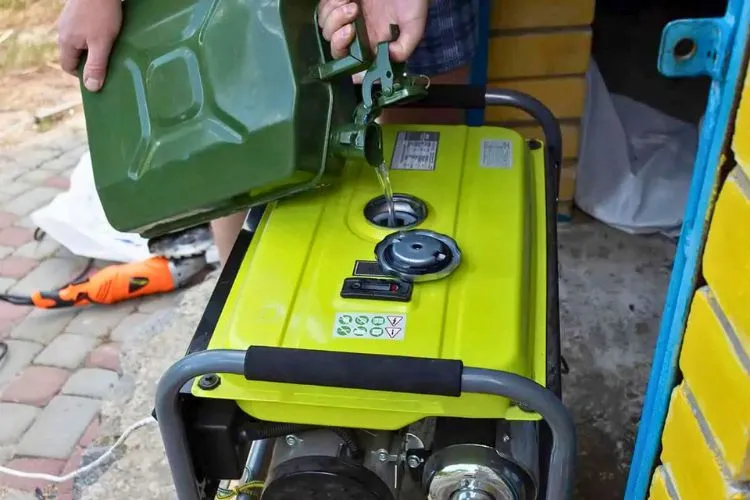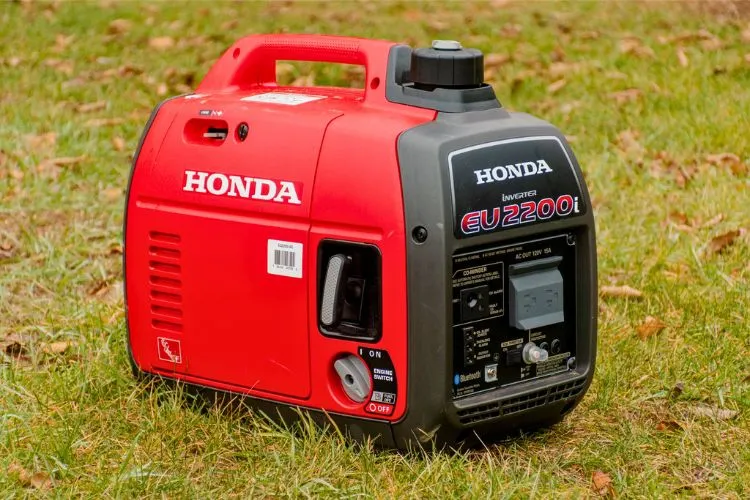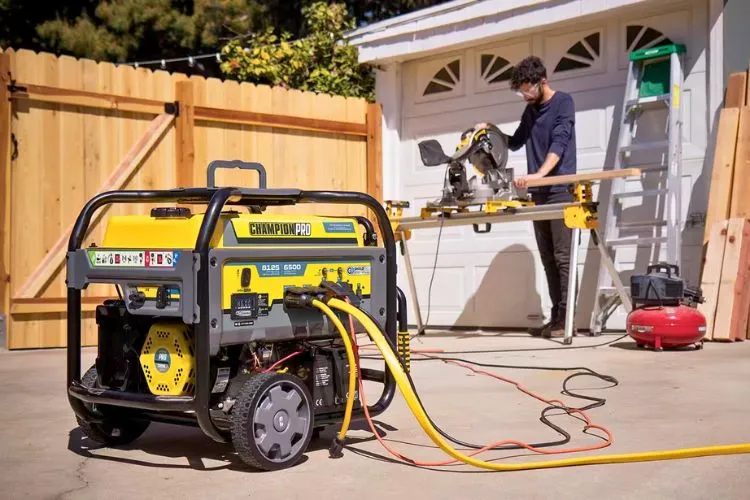Ensuring the safety of your portable generator involves grounding, a critical step often overlooked.
Grounding minimizes the risk of electric shock, protects against electrical faults, and enhances the performance of your generator.
This guide provides a clear roadmap on how to ground a portable generator, ensuring it operates safely when you need it most.

What You Need to Know Before Grounding Your Generator?
Grounding, in simple terms, is the process of connecting an electrical circuit to a reference ground, which is integral in the event of a fault.
It’s not just a good safety practice; in many cases, it is required by law.
Portable generators vary, and so do their grounding needs. Some have a neutral bonded frame, while others do not and require separate grounding.
Materials Needed for Grounding
Before you begin, gather the necessary materials:
- A copper grounding rod, typically four feet in length, to act as your reference ground.
- Copper wire gauge, determined by the instructions of your generator.
- A set of tools including a hammer for driving the rod into the ground, and pliers with wire-cutting ability.
How to Ground a Portable Generator?
Identifying the Grounding Point
Locate your generator’s grounding bolt. It’s often labeled and found on the frame of the generator. If you can’t find it, consult your generator’s manual.
Installing the Ground Rod
Choose a location to install the grounding rod. It should be in the soil near your generator but away from heavy traffic areas to prevent tripping or damage.
Drive the rod into the ground using a hammer. Consider the depth recommendation for your specific area, though generally, at least eight feet is standard.
Connecting the Generator to the Ground Rod
Once the rod is secure, connect one end of your copper wire to the grounding bolt on your generator using the pliers. Ensure the connection is tight and won’t come loose easily.
Lay the wire flat on the ground as you run it to the rod to prevent any tripping hazards or damage to the wire.
Attach the other end of the wire to the top of the grounding rod, again ensuring a firm and reliable connection.
Safety Checks and Testing
Finally, make certain that all connections are secure and that your generator is properly grounded before use.
A simple test with a multimeter can confirm that there’s continuity between the generator frame and the ground rod, indicating a successful ground. Always follow the manufacturer’s testing recommendations.
Pro Tips for Effective Grounding
When selecting a location for your grounding rod, consider the type of soil. Soft, moist earth conducts electricity better and may allow for easier installation of the ground rod.
If the soil is hard or rocky, water it the night before to soften the ground. For maintenance, check the grounding wire and connections periodically for corrosion or damage, especially after extreme weather conditions.

Common Mistakes to Avoid
Common grounding errors include using the wrong type or size of wire, not driving the rod deep enough into the ground, and poor connections that could lead to an ineffective ground. Double-check these areas to avoid mistakes.
Understanding Ground Fault Protection
Ground Fault Protection offers a critical safeguard against electric shock, especially important in environments where portable generators are used.
At its core, this protection is facilitated by Ground Fault Circuit Interrupters (GFCIs), devices designed to monitor the balance of electrical current flowing through a circuit.
When a GFCI detects an imbalance, indicative of electricity leaking to the ground possibly through a human body, it quickly cuts off the power supply to prevent injury.
In the context of portable generators, grounding enhances the effectiveness of GFCIs, providing an essential path for excess electricity to safely dissipate into the earth. This is particularly vital in damp or wet conditions where the risk of electric shock escalates.
Properly grounding your generator and ensuring it is equipped with GFCIs can significantly reduce the risk of electric shock, safeguarding users against potential harm.
By integrating ground fault protection into your safety measures, you create a defensive layer that enhances operational safety, ensuring that your reliance on portable power sources does not compromise your well-being.
The Role of the Electrical Code in Generator Grounding
Electrical codes, such as the National Electrical Code (NEC) in the United States, serve as the blueprint for electrical safety in both residential and commercial settings.
These codes provide specific guidelines on how to ground portable generators correctly, ensuring that all grounding practices conform to the highest safety standards.

Compliance with these regulations is not just about following the letter of the law, but about ensuring the best safety practices are put in place.
Local amendments to the NEC or other electrical codes might dictate more stringent grounding methods or materials based on regional factors, such as soil conductivity or weather patterns.
Adhering to these codes is essential, as improper grounding can lead to severe consequences, including electrical fires, damage to equipment, and life-threatening electric shocks.
Always consult the latest edition of the NEC or your local electrical codes to ensure your grounding methods meet current safety requirements.
Compliance with these standards provides peace of mind that your portable generator is safe to use and your practices are legally sound.
Frequently Asked Questions (FAQs)
Do all portable generators need to be grounded?
Some generators require grounding, while others do not. Check your owner’s manual or consult the manufacturer to understand your specific model’s requirements.
How deep should the grounding rod be?
A general rule is that the grounding rod should be at least eight feet deep into the ground, but local codes might require a different length.
Can I ground my generator to my house’s grounding system?
No, a portable generator should have its own separate grounding rod. Never connect your generator to your house’s grounding system as it can cause electrical hazards and is typically against electrical codes.
Conclusion:
Grounding your portable generator is a crucial step towards ensuring safety and reliable operation.
Take the time to follow these detailed steps, from preparing materials to connecting and testing your ground.
Remember, proper grounding not only protects you from electrical hazards but also ensures your generator performs optimally when you most depend on it.
Always prioritize safety, and your portable generator will be a safe and dependable source of power for many years to come.
